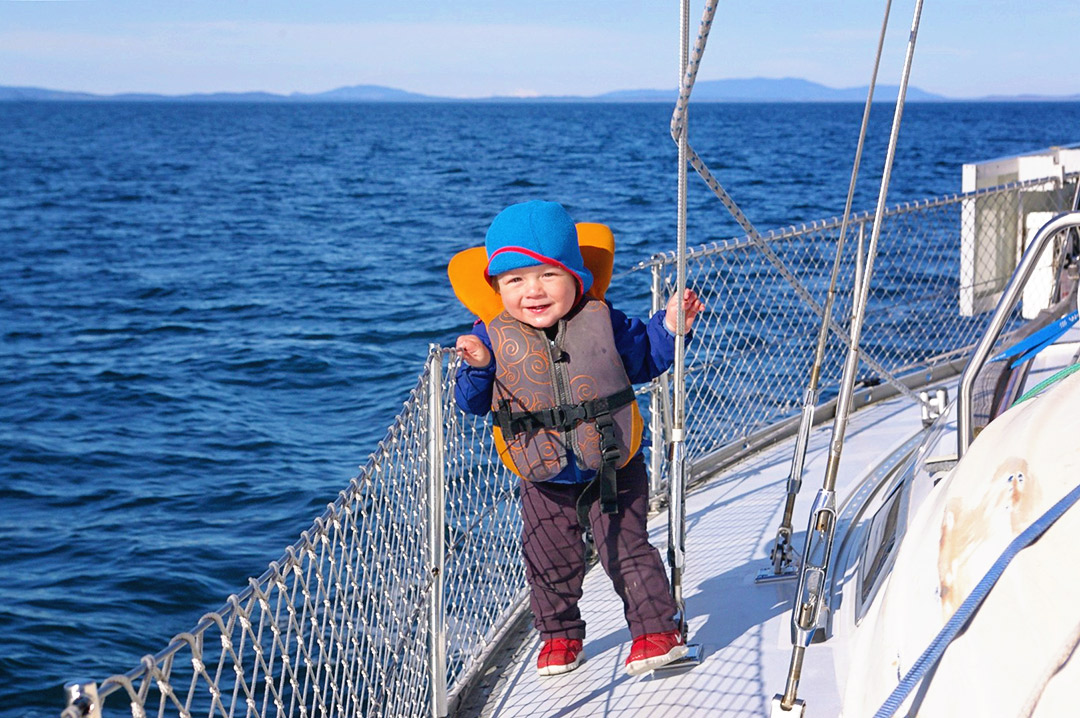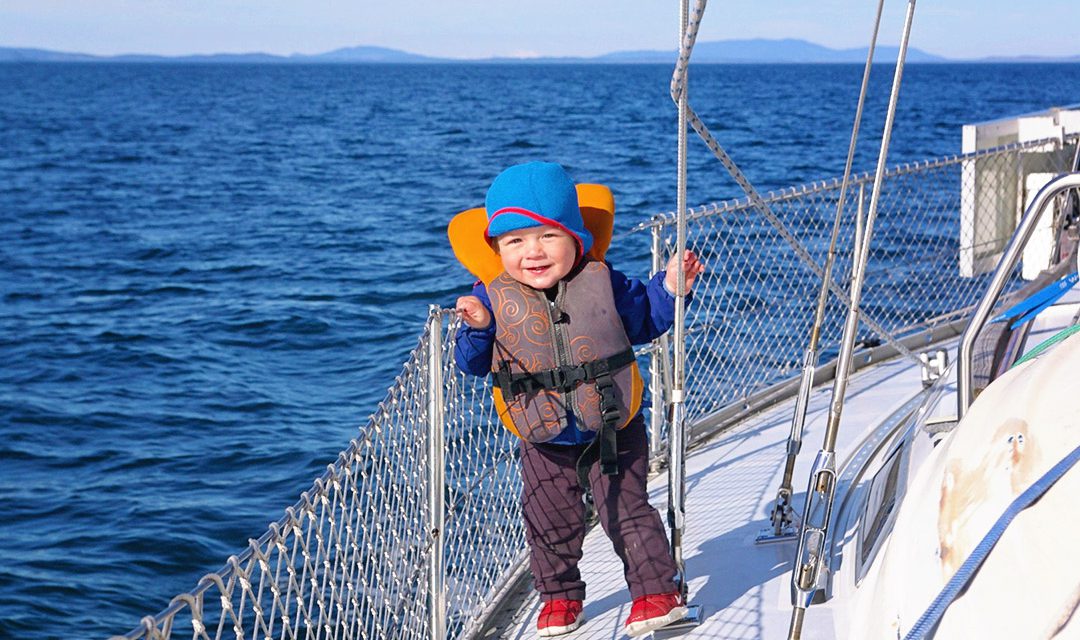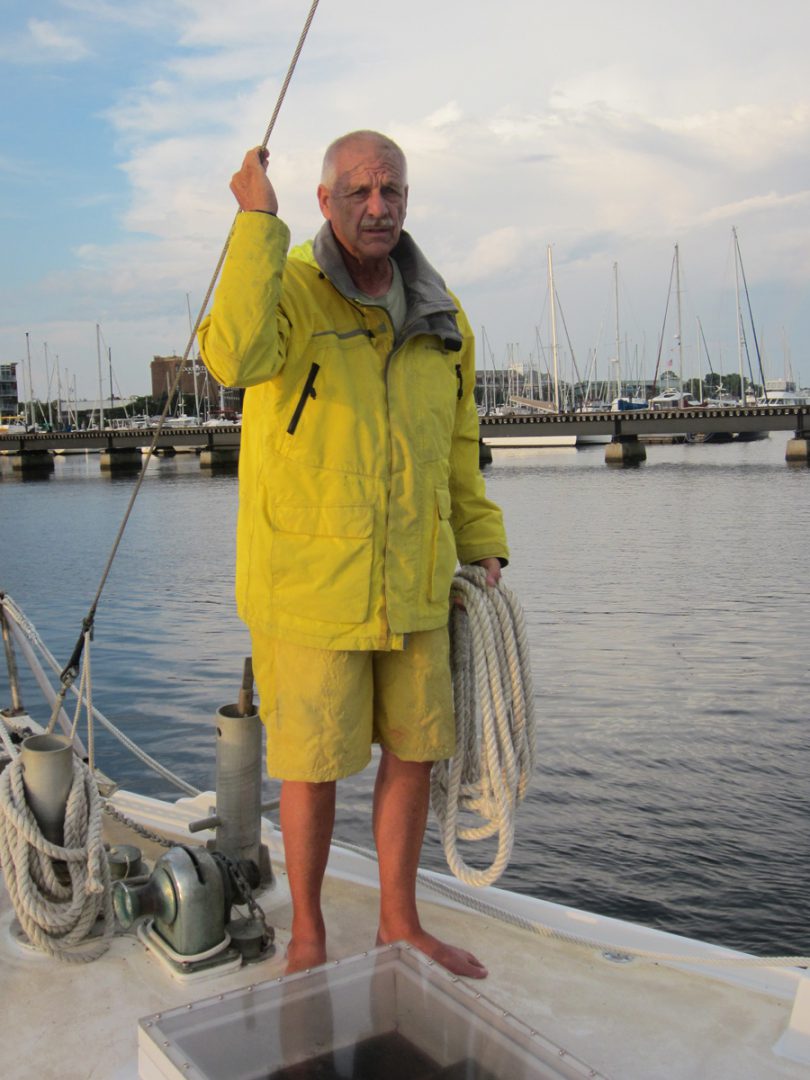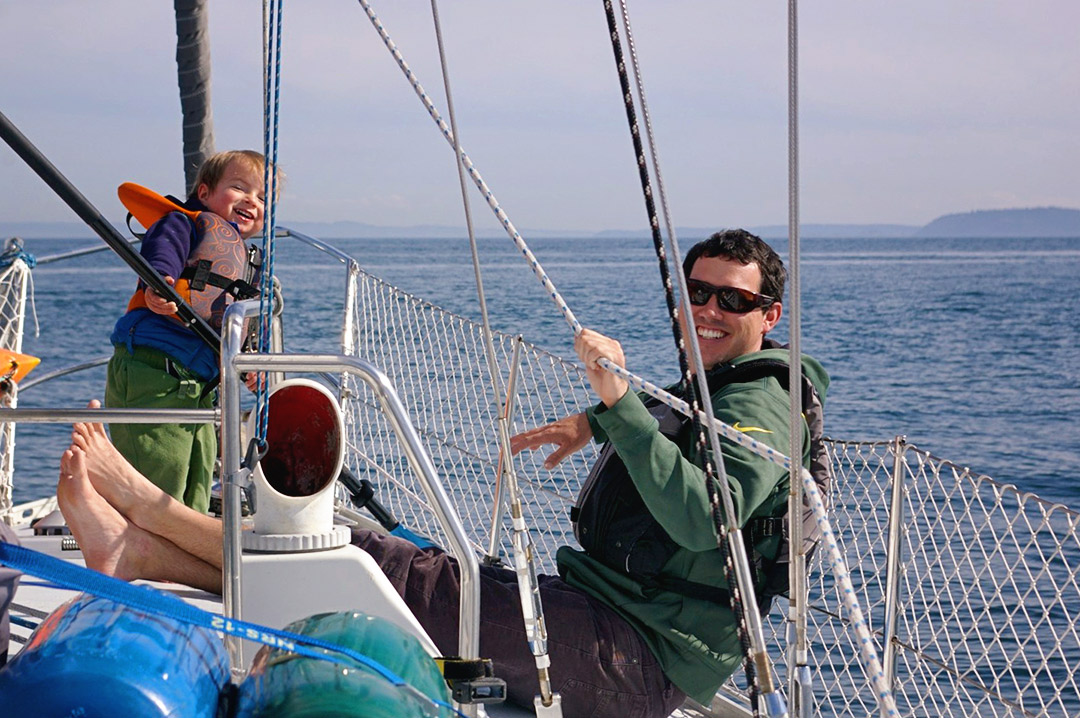
There comes a time on a sailboat when something you’ve installed meets the end of its useful life. Maybe it’s a piece of gear that just can’t be repaired again. Or perhaps it’s an old sail so blown out that, while you appreciate its service, you simply cannot bear to hoist it one more time. Last spring aboard our 1984 Grand Soleil 39 Yahtzee, it was our lifeline netting.
Just a few days shy of our eldest son Porter’s 8th birthday, I knew the time had come. Drooping and discolored after many years and miles of service, salt spray, and sun, the old netting had not only lost its luster but its usefulness. Though the realization was practical, it was also bittersweet.
I thought back to when we had first installed the shiny white netting. Young Porter was becoming increasingly mobile on deck and down below, holding onto the settees and cockpit coamings to stand up and take small steps. Shortly thereafter, he began climbing the companionway stairs faster and faster and crawling on the cabintop in a life jacket that made him look like a neoprene hot dog.
All of this newfound movement—and walking soon to come—meant that we needed to decide about lifeline netting. Putting up netting is a decision not all families with infants or boat owners with pets choose to make, and a false sense of security is usually the top reason why. In our case, we figured it couldn’t hurt, and at the very least it would keep errant tools, toys, and possibly sails—as well as newly mobile toddlers—from falling off the deck into the water.
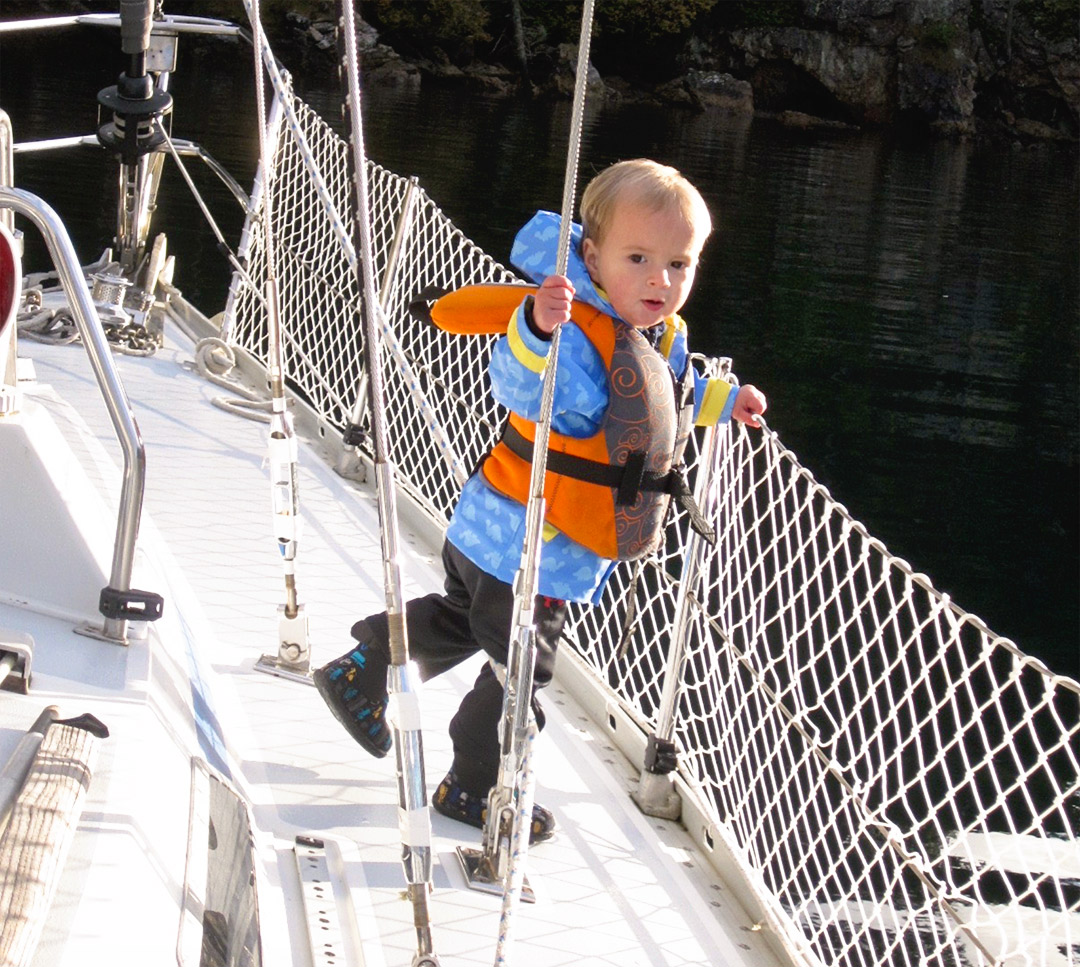
After doing our homework, we bought 80 feet of lifeline net from Seattle Marine and Fishing Supply, and I set about the task of stringing it up during a series of beautiful spring days. With our new lifeline netting set, we departed the marina later that summer with Porter fully walking and embarked on the adventures ahead. Along the way, another son, Magnus, joined our crew, and he too learned to crawl and walk on deck with the lifeline netting in place.
Alas, thousands of miles later and with the boys having grown up spending countless hours on deck, the time finally came to remove the netting. On a Saturday morning in a Nicaraguan marina oh so far from where we’d carefully hung the netting in Seattle, Porter and I used scissors and a rigging knife to remove it.
Requiring far less time to take it down than to put it up, the occasion itself wasn’t remarkable or ceremonial in any way. But it did flood back many wonderful memories of watching the boys gain their sea legs on deck, play with toys, and help us with any number of boat tasks and projects. I can’t remember the netting ever actually saving them from falling overboard. But in the end, it did give us peace of mind, which is an all-around win that we’ll take. And as expected, the netting did save a few tools and toys along the way—and that’s a win-win.
